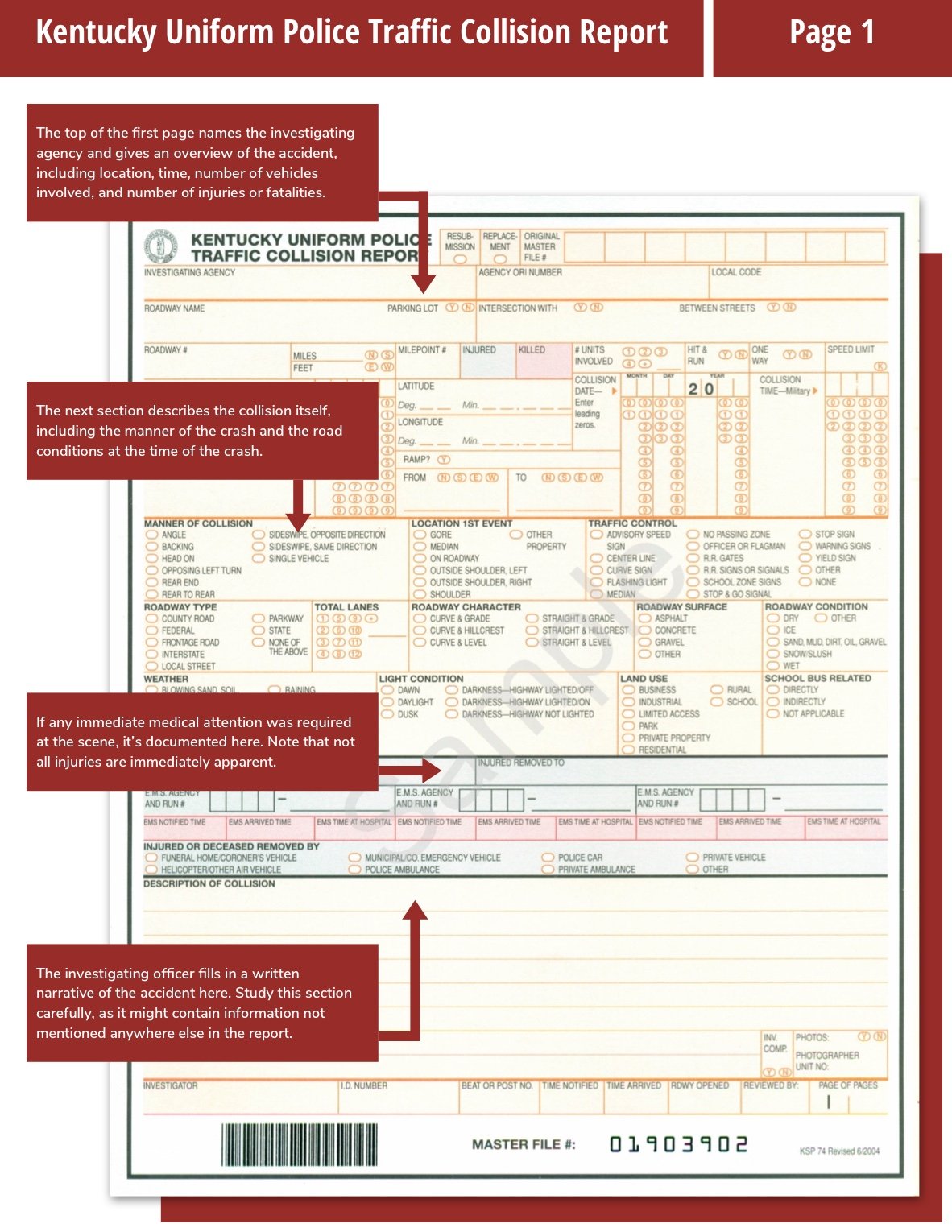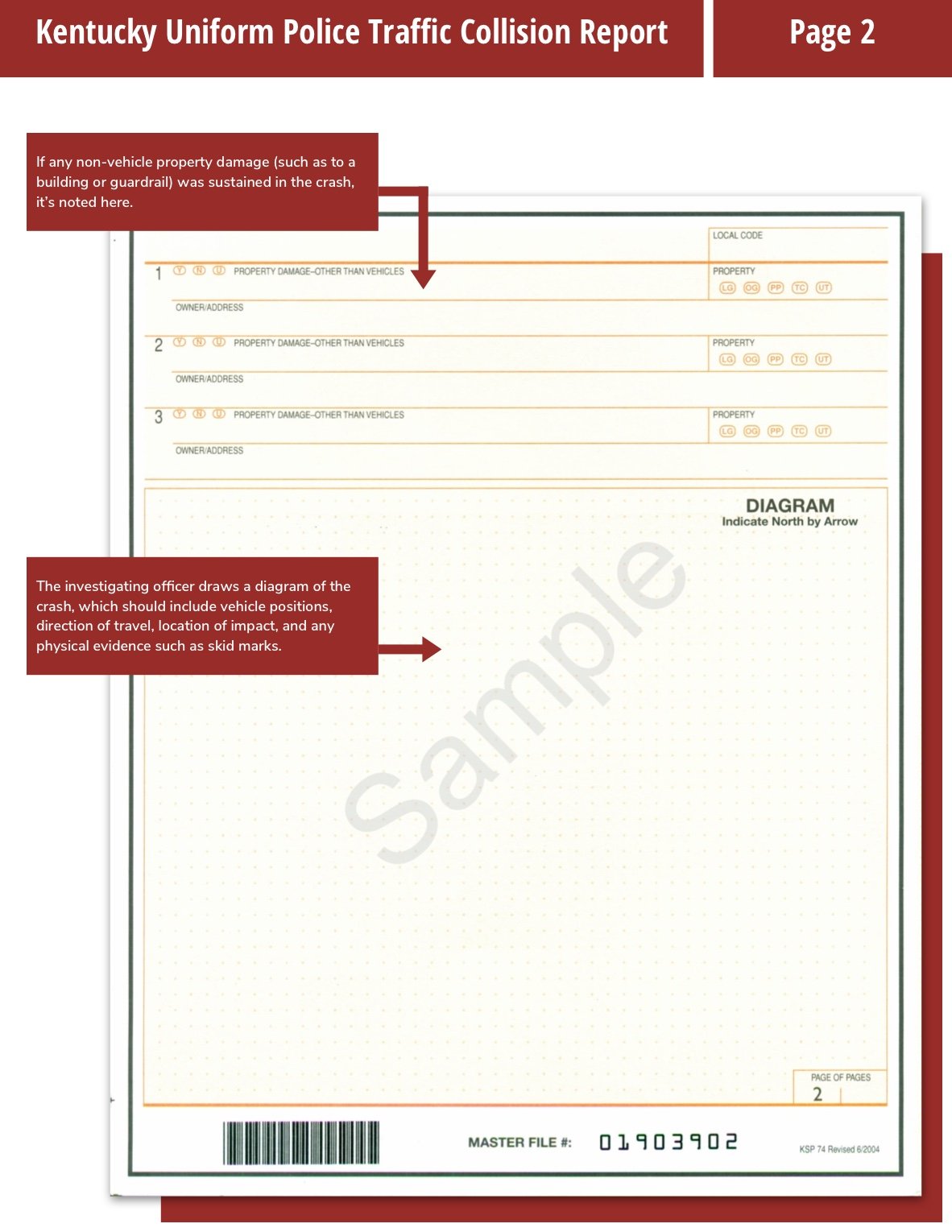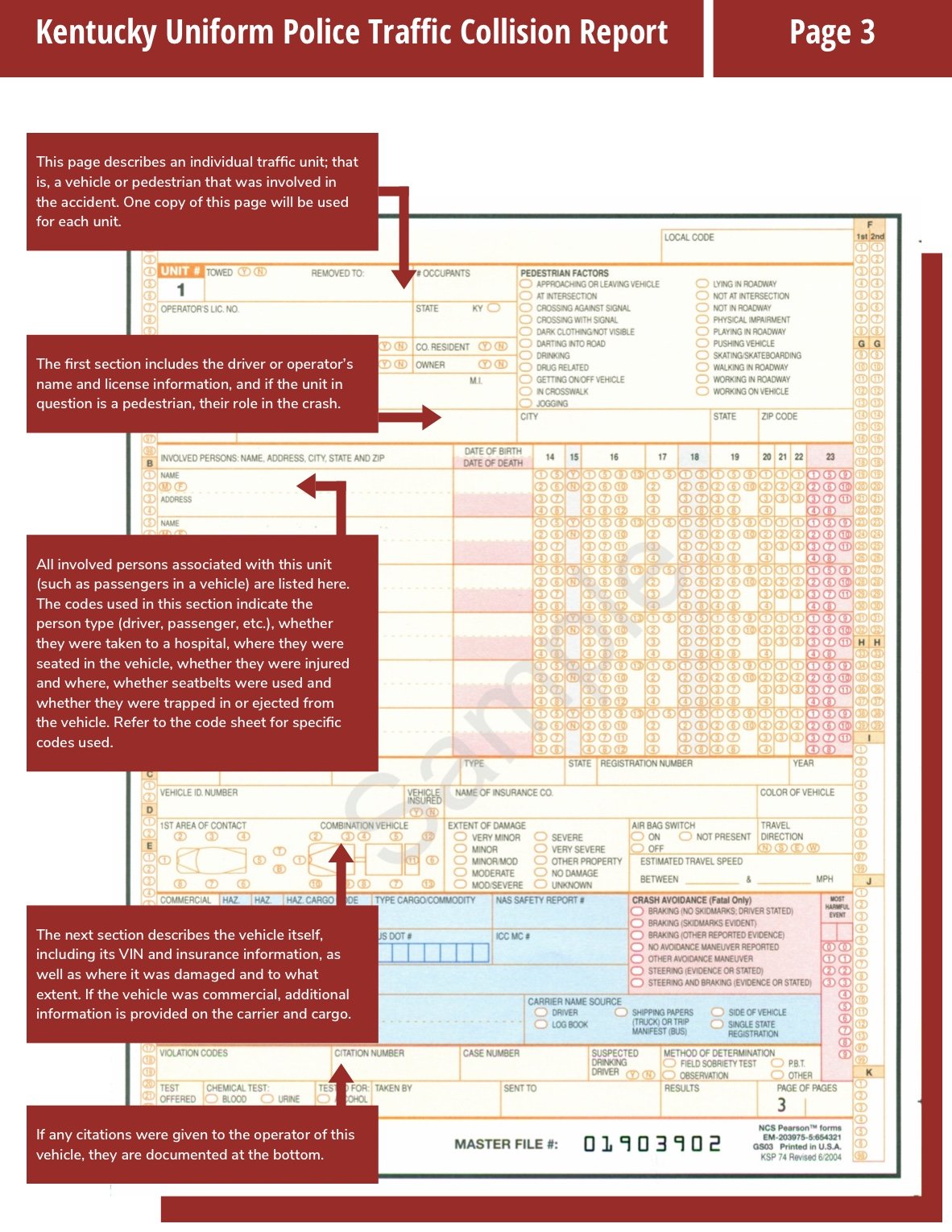In a divorce, the laws of equitable distribution distinguish marital property from separate property. Technically, only marital property, that is, proper...
After a car accident in Kentucky, you need to understand the evidence in your case, and one critical piece of evidence is the car accident report, called a Kentucky Uniform Police Traffic Collision Report, filled out by the investigating officer. Insurance companies use the police report as part of their determination of fault. If the officer is later called to testify in your case, the report will likely be the basis of their testimony.
Kentucky’s complex car insurance system makes understanding all the details of your accident especially important. Here’s what to look for in the report:
Kentucky Uniform Police Traffic Collision Report

Page 1
The top of the first page names the investigating agency and gives an overview of the accident, including location, time, number of vehicles involved, and number of injuries or fatalities.
Click here to download a printable PDF of How to Read Your Kentucky Car Accident Report.
The next section describes the collision itself, including the manner of the crash and the road conditions at the time of the crash.
If any immediate medical attention was required at the scene, it’s documented here. Note that not all injuries are immediately apparent.
The investigating officer fills in a written narrative of the accident here. Study this section carefully, as it might contain information not mentioned anywhere else in the report.

Page 2
If any non-vehicle property damage (such as to a building or guardrail) was sustained in the crash, it’s noted here.
The investigating officer draws a diagram of the crash, which should include vehicle positions, direction of travel, location of impact, and any physical evidence such as skid marks.

Page 3 (Unit Page)
This page describes an individual traffic unit; that is, a vehicle or pedestrian that was involved in the accident. One copy of this page will be used for each unit.
The first section includes the driver or operator’s name and license information, and if the unit in question is a pedestrian, their role in the crash.
All involved persons associated with this unit (such as passengers in a vehicle) are listed here. The codes used in this section indicate the person type (driver, passenger, etc.), whether they were taken to a hospital, where they were seated in the vehicle, whether they were injured and where, whether seatbelts were used and whether they were trapped in or ejected from the vehicle. Refer to the code sheet for specific codes used.
The next section describes the vehicle itself, including its VIN and insurance information, as well as where it was damaged and to what extent. If the vehicle was commercial, additional information is provided on the carrier and cargo.
If any citations were given to the operator of this vehicle, they are documented at the bottom.





